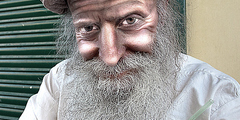Gimp-user Digest, Vol 7, Issue 15
This discussion is connected to the gimp-user-list.gnome.org mailing list which is provided by the GIMP developers and not related to gimpusers.com.
This is a read-only list on gimpusers.com so this discussion thread is read-only, too.
3 of 6 messages available
| 20030408190017.B5A2B100CE@l... | 07 Oct 20:15 | |
| Gimp-user Digest, Vol 7, Issue 7 | Michael J. Hammel | 08 Apr 21:13 |
| mjhammel@graphics-muse.org | 07 Oct 20:15 | |
| Gimp-user Digest, Vol 7, Issue 7 | David Burren | 09 Apr 02:25 |
| 20030416090043.596C410126@l... | 07 Oct 20:15 | |
| Gimp-user Digest, Vol 7, Issue 15 | Michael J. Hammel | 16 Apr 16:31 |











